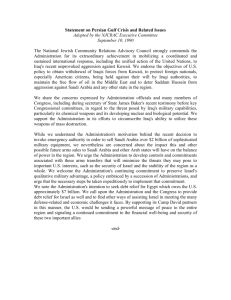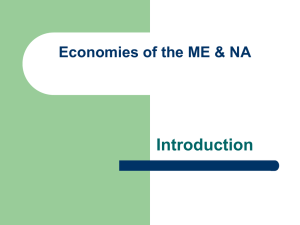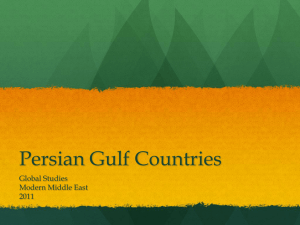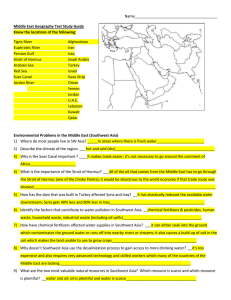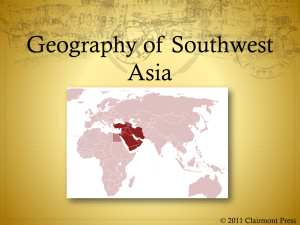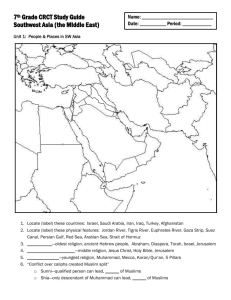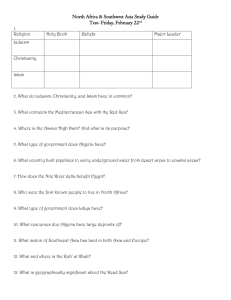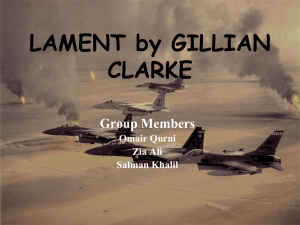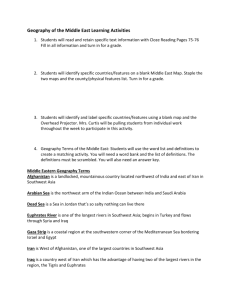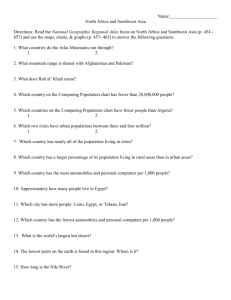Southwest Asia Geo Interactive Notes
advertisement
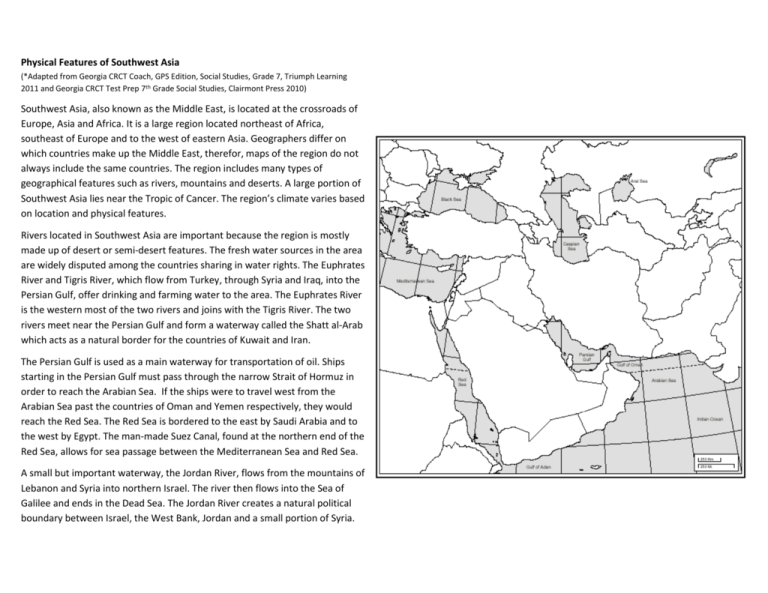
Physical Features of Southwest Asia (*Adapted from Georgia CRCT Coach, GPS Edition, Social Studies, Grade 7, Triumph Learning 2011 and Georgia CRCT Test Prep 7th Grade Social Studies, Clairmont Press 2010) Southwest Asia, also known as the Middle East, is located at the crossroads of Europe, Asia and Africa. It is a large region located northeast of Africa, southeast of Europe and to the west of eastern Asia. Geographers differ on which countries make up the Middle East, therefor, maps of the region do not always include the same countries. The region includes many types of geographical features such as rivers, mountains and deserts. A large portion of Southwest Asia lies near the Tropic of Cancer. The region’s climate varies based on location and physical features. Rivers located in Southwest Asia are important because the region is mostly made up of desert or semi-desert features. The fresh water sources in the area are widely disputed among the countries sharing in water rights. The Euphrates River and Tigris River, which flow from Turkey, through Syria and Iraq, into the Persian Gulf, offer drinking and farming water to the area. The Euphrates River is the western most of the two rivers and joins with the Tigris River. The two rivers meet near the Persian Gulf and form a waterway called the Shatt al-Arab which acts as a natural border for the countries of Kuwait and Iran. The Persian Gulf is used as a main waterway for transportation of oil. Ships starting in the Persian Gulf must pass through the narrow Strait of Hormuz in order to reach the Arabian Sea. If the ships were to travel west from the Arabian Sea past the countries of Oman and Yemen respectively, they would reach the Red Sea. The Red Sea is bordered to the east by Saudi Arabia and to the west by Egypt. The man-made Suez Canal, found at the northern end of the Red Sea, allows for sea passage between the Mediterranean Sea and Red Sea. A small but important waterway, the Jordan River, flows from the mountains of Lebanon and Syria into northern Israel. The river then flows into the Sea of Galilee and ends in the Dead Sea. The Jordan River creates a natural political boundary between Israel, the West Bank, Jordan and a small portion of Syria. Turkey, the starting place for the Tigris and Euphrates Rivers, is bordered to the southwest by Syria and to the southeast by Iraq. The small island south of Turkey is known as Cyprus. To the southeast of Cyprus is Lebanon. To the south of Lebanon is Israel, and to the east of Israel is Jordan. The Arabian Peninsula, which is located east of Africa and south of Turkey, is made up of Yemen, Oman, United Arab of Emirates, Qatar, Kuwait, Iraq and Saudi Arabia. Saudi Arabia is the largest country on the Arabian Peninsula. Yemen is located to the southwest of Saudi Arabia while Oman is located to the southeast. To the north of Oman is the United Arab of Emirates. Qatar is located on the eastern border of Saudi Arabia and Bahrain is a small island off the coast of Qatar. Kuwait is a small country located at the northern point of the Persian Gulf. Iraq is directly north of Kuwait. Just east of Iraq is Iran. Afghanistan, located at the eastern edge of the region, is a landlocked country which shares its western border with Iran and is north of Pakistan. A large portion of the country is covered in mountains. Mining is a main industry for Afghanistan. Southwest Asia is a meeting point for three of the world’s seven continents. The region has a history of conflict for many reasons. It is geographically covered in deserts and semi-deserts, is limited on fresh water sources, and has a wide diversity amongst the populations.
